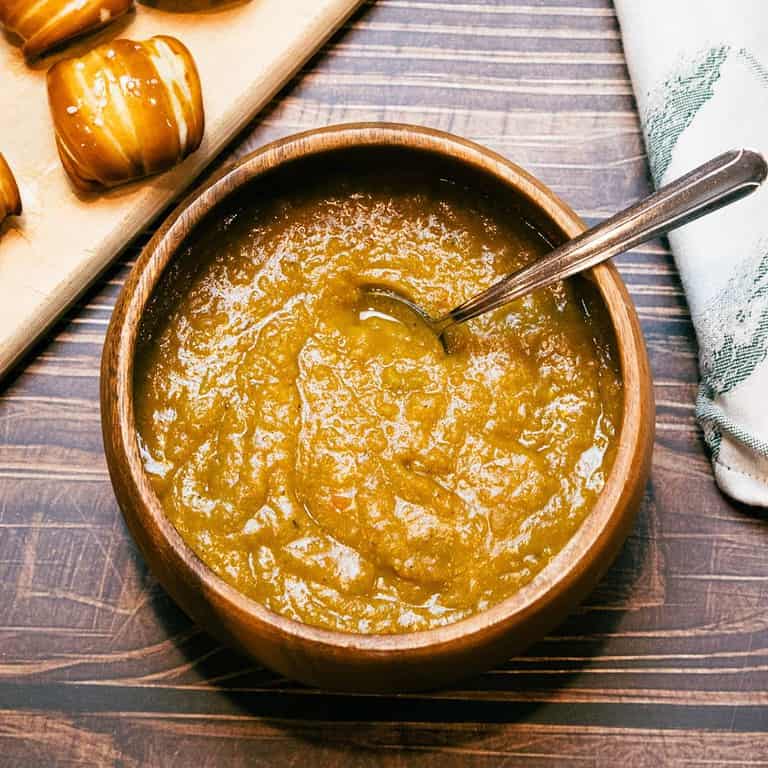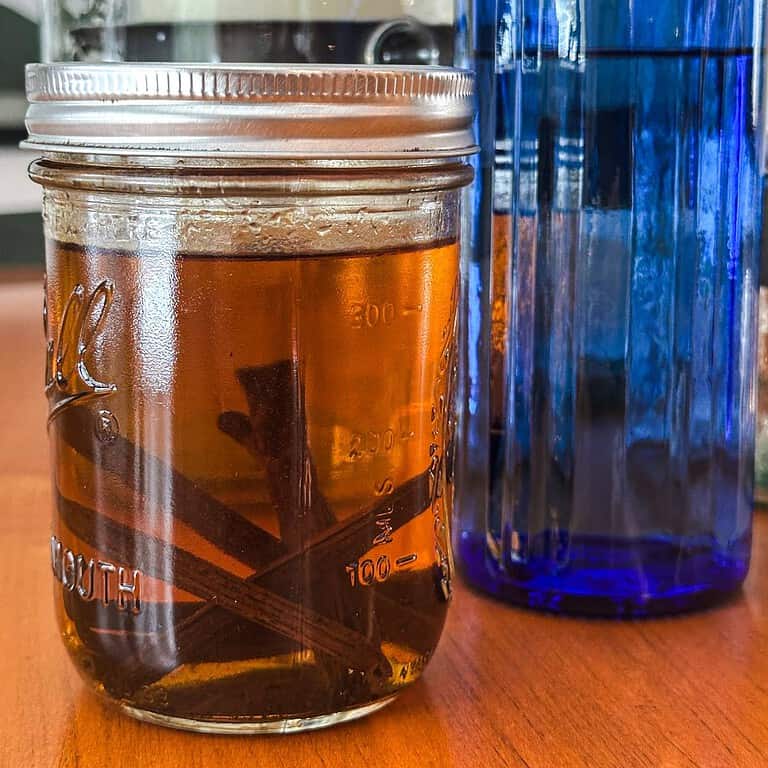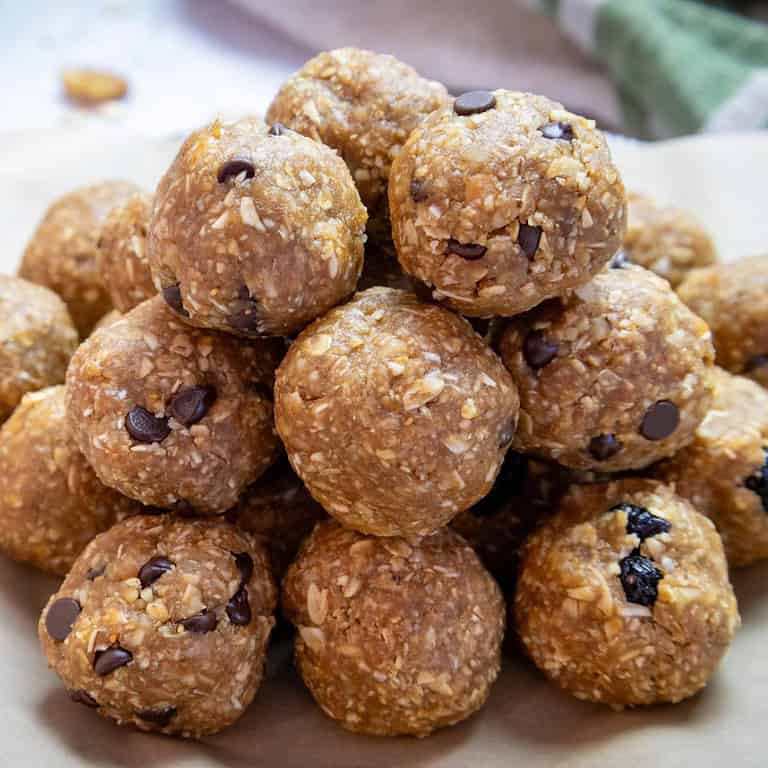How to Dry Cranberries: Sugar and Oil-Free Recipe
Learn how to dry cranberries that are sugar and oil-free. These cranberries are easy to make in a dehydrator or oven, and they are perfect for the holidays, dressed in salads, and all of your baking needs.
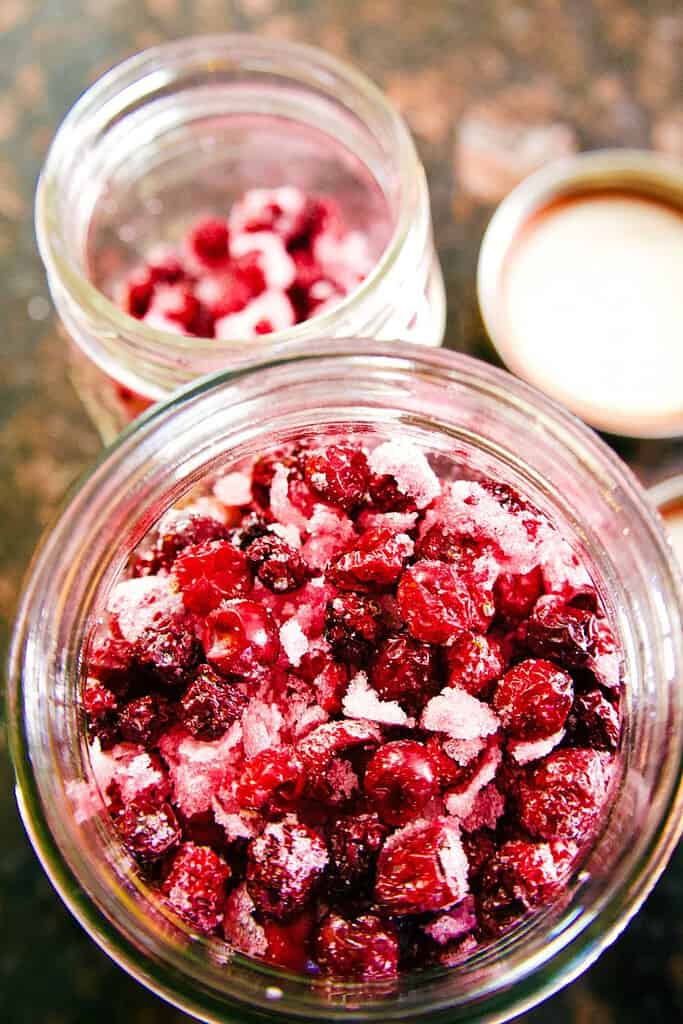
NOTE: This post has been updated since it was originally published on November 3, 2022.
Dried cranberries make some of the most beautiful garnishes, especially during the fall and winter seasons. If made correctly, dried cranberries can be quite nutritious, and I am going to show you how to dry cranberries in a way where they hold their nutritional value – two different ways actually!
The first way to prepare cranberries makes for the traditional delicious dried cranberry. The second way creates a beautiful crystallized cranberry version, which not only tastes just as delicious but serves as an elegant garnish.
Dried cranberries are easy to make with either a dehydrator or oven, and they are perfect for a healthy snack, added to salads, or used in baking.
Alternatively, the crystallized cranberries provide a beautiful garnish that adds a touch of elegance to any of your dishes. The taste is the same but this version adds a wonderful, sparkling decorative finish.
Most commercially available dehydrated cranberries, or craisins as they are often called, are made with a lot of sugar and processed oils but they don’t have to be. It is not complicated to make dried cranberries sugar and oil-free.
This article may contain affiliate links for your convenience. As an Amazon Associate, I earn from qualifying purchases at no extra cost to you. You can read the full disclosure policy here. Thank you in advance for your support.
Kitchen Tools Recommended
- Dehydrator. This dehydrator is one of my favorite kitchen tools. It is great fun to make healthy snacks, and it is one of those tools where you set it and leave it – LOVE that!
- Baking sheet. This is a beautiful design if you are going to use the oven method.
- Silicone dehydrator sheets. For a while, I did not have these dehydrator sheets, and I felt limited with the kinds of snacks I could make using my dehydrator. Now that I own a set, I wish I would have bought them sooner.
- Parchment paper. If you are going to use the baking method.
- Large Pot. To steam and soften the cranberries. These are exceptional pots and pans, and I use my set almost every single day.
- Large bowl
- Large strainer
Ingredients Needed
- Cranberries. Fresh whole cranberries are best but you can also use frozen.
- Monk Fruit. Monk fruit is a plant-based, sugar substitute sweetener that does not spike your blood glucose as regular sugar does. I use it quite often when I am trying to minimize my sugar intake.
- Orange juice. Organic fresh squeezed is always best but mainly look for pure orange juice, without any additional ingredients.
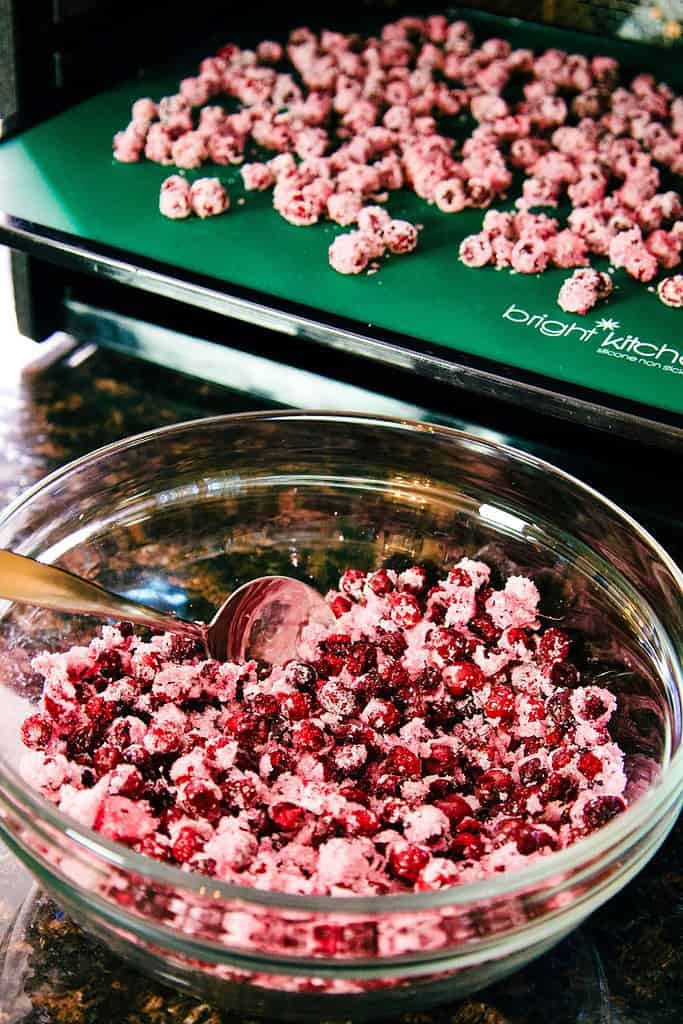
How To Dry Cranberries: Step-by-Step Instructions
STEP 1. PREPARATION
Dehydrator Method: Prepare the dehydrator by making sure the trays are clean and lined with silicone non-stick dehydrator sheets.
Set the dehydrator to 135°F.
Oven Method: Set your oven temperature to the lowest setting. Most often this is 175° Fahrenheit. If you can turn your oven down even lower, that would be great, the ideal is 135-145°F.
Using a large strainer, rinse the fresh cranberries in cold water and drain.
STEP 2. PREPARE THE CRANBERRIES
Bring a large pot of filtered water to a boil.
Traditional Dried Cranberries. Add the monk fruit to the boiling water and stir until dissolved.
Crystallized Cranberries. Do not add the monk fruit at this time.
Remove the pot from the burner, and add the orange juice, stir to dissolve.
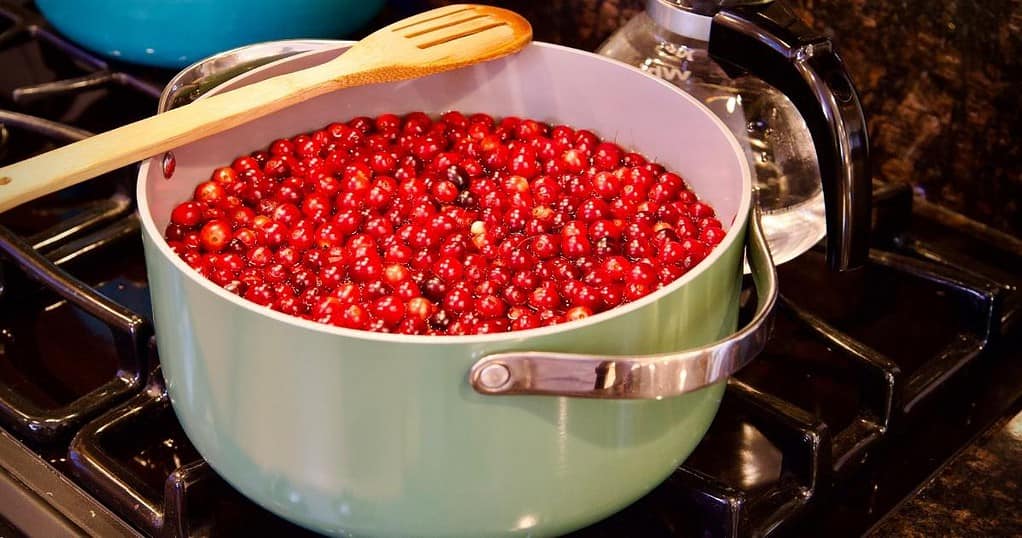
Next, add cranberries – do not boil cranberries.
Allow the cranberries to sit in the hot water for approximately 10-15 minutes or until they begin to pop and break open.
NOTE: This is an important step. The cranberries will dry better after they have popped and are broken apart slightly. Take your time with this step and make sure the majority of cranberries are slightly split.
Drain water, and transfer cranberries to a large bowl of ice water to cool and preserve color.
Drain cranberries from the ice water, and blot them dry using either a clean dish towel or paper towels, being careful not to smash or break apart the cranberries.
Crystallized Cranberries: Place cranberries in a large bowl and now add monk fruit. Gently toss to coat cranberries evenly.
STEP 3. DEHYDRATE
Dehydrator Method. Spread berries in a single layer onto a lined food dehydrator tray. Go ahead and use multiple trays if you need, to spread out the cranberries. You do not want them sitting too close together.
Place trays into the dehydrator for 10-12 hours, or until they are thoroughly dried inside and out.
Once the cranberries are dried, remove the trays from the dehydrator and let the cranberries cool to room temperature before storing.
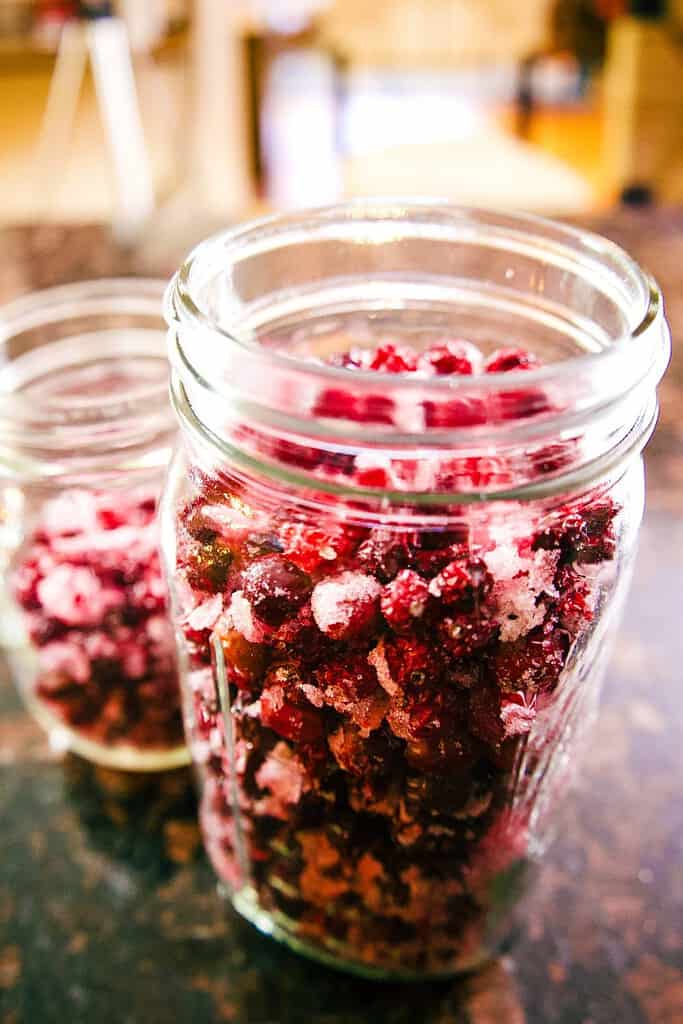
Oven Method. Spread the cranberries out onto a baking sheet lined with a piece of parchment paper. Use multiple baking sheets if you need to keep the cranberries from sitting too close to one another.
Place the sheets into a low-temperature oven. Keep the door open a crack if your oven cannot go below 175°F. Let them bake and dry out for approximately 3-4 hours, or until they are thoroughly dried.
Once dried, take the cranberries out of the oven and place the baking sheet on a cooling rack. Let the dried cranberries cool completely before storing.
How To Store
How you store your dried cranberries is important, as several factors can affect the shelf life of dried fruits and vegetables.
It is very important to prevent excess moisture from getting into your stored cranberries. For this reason, it is best to store cranberries in an airtight container under low humidity.
A mason jar or another tightly sealed glass jar, as well as BPA-free storage containers, will prevent any residual moisture from accumulating.
Special packaging, like mylar bags with oxygen absorbers, will also help keep moisture, air, and light away for a longer shelf life.
If stored properly, dried cranberries are shelf-stable for 1-2 months.
Recipe Tips
Always be careful when handling fresh cranberries to avoid smashing and breaking them apart, otherwise, you will have cranberry sauce and not dried whole fruit!
The time in the dehydrator will depend on several things; how well you’ve dried the cranberries after draining, how big or small your cranberries are, and how hot you’ve made your dehydrator.
I find the 135°F temperature works well but if you want your dried cranberries to truly be considered a raw food, then you must set your temperature to 105°F. You will then have to extend the drying time for several more hours.
VIDEO: How to Dry Cranberries: Sugar and Oil-Free
Cranberry Season and Harvesting Cranberries
Harvesting cranberries most commonly happens mid-September through early November, and there are two ways to harvest cranberries, dry harvesting or wet harvesting.
Dry Harvest
Dry harvesting is a method where the farmer uses a walk-behind machine, called a mechanical picker, to comb the berries off the vines, where they then get conveyed into a burlap bag or wooden box. The bags or boxes of cranberries get transferred to trucks and sent to receiving stations to then be cleaned and graded.
Dry-harvested cranberries are the ones you see in grocery stores, farmer’s markets, and roadside stands.
Wet Harvest
Wet harvesting requires flooding the cranberry bogs and then using a machine, called a “beater”, to push down the vines and dislodge the cranberries.
The cranberries then float to the surface of the water. They float because they are hollow inside and have tiny pockets of air – very cool!
The cranberries then get rounded up using plastic or wooden brooms and are either pumped into a truck or lifted by a conveyor. Then, similar to the dry harvest, the cranberries get sent to a receiving station for cleaning and grading.
More than 90% of cranberries are wet harvested, these cranberries get used for juice, sauces, dried cranberries, or ingredients in other processed foods.
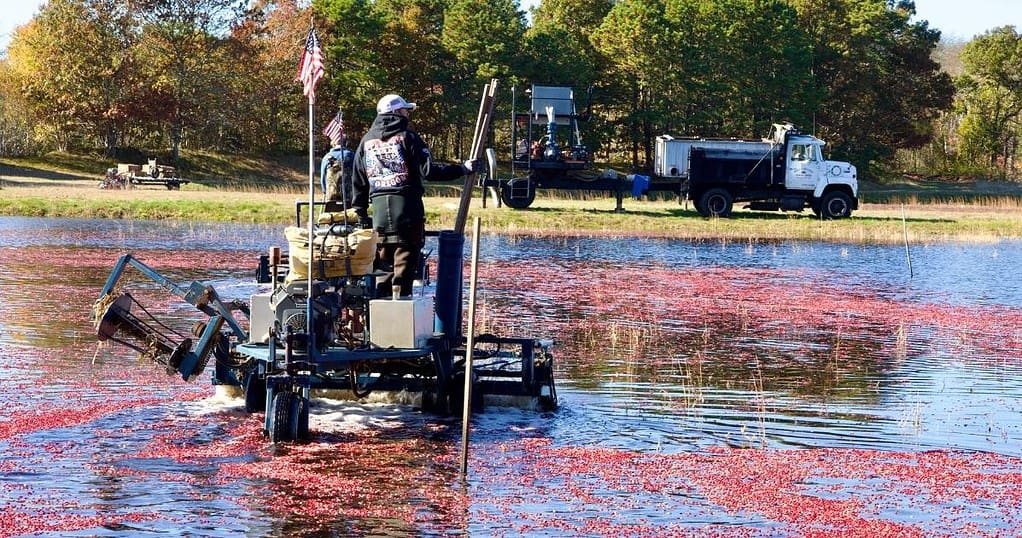
5 Healthy Cranberry Benefits
Cranberries are 90% water and contain a good amount of fiber. They also contain plenty of vitamins and minerals like vitamins C, E, K, and manganese.
There are many good reasons to eat cranberries but here are my top 5 reasons.
- Anti-inflammatory – cranberries contain high amounts of antioxidants which have been shown to reduce the risk of some chronic diseases due to their anti-inflammatory effect.
- Heart health – cranberries help improve heart health by lowering blood pressure and improving cholesterol levels.
- Protect against cancer – cranberries contain high amounts of antioxidants, and one particular powerful antioxidant, a-type proanthocyanins, is being studied to see if and how it may prevent cancer.
- Research is also being done on a-type proanthocyanidins, which are only found in cranberries, to see if they may help prevent colon and gastrointestinal cancers specifically.
- Digestive health – cranberries help to reduce the bad microbes in your gut, and they help to replenish the good bacteria in your digestive system.
- Prevent UTIs – cranberries can help to prevent urinary tract infections however, they don’t treat the infection if you already have it. A-type proanthocyanidins prevent E. coli from binding in the bladder, which is usually the first step in developing a UTI.
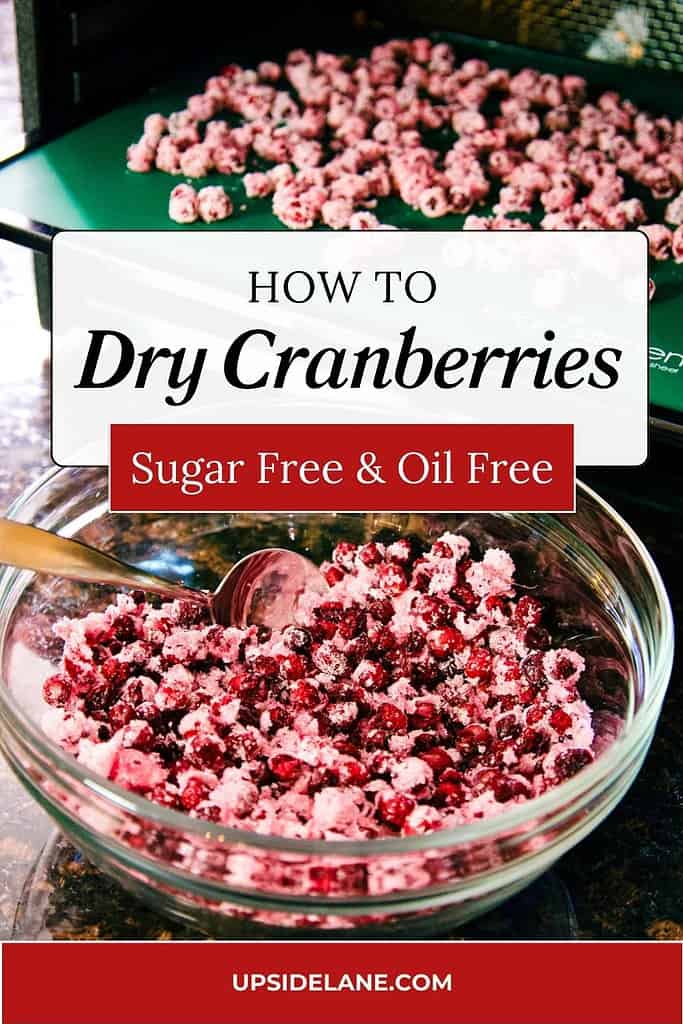
Types & Varieties of Cranberries
You may have thought a cranberry is a cranberry, but there are several types and varieties of cranberries around the world.
Vaccinium Macrocarpon Ait., the American cranberry, is a native berry to North America.
Vaccinium Oxycoccus L. is the European cranberry and is smaller and, more often than not, speckled.
The United States grows over 100 varieties of cranberries, with Wisconsin and Massachusetts carrying the highest yield.
A big shout-out to Massachusetts and Cape Cod which has an abundance of cranberry bogs. One of my favorite things to do in the fall here on Cape Cod is to watch the farmers harvest their cranberries!
Excellent Recipes For Dried Cranberries
- Beautiful Quinoa Cranberry Salad: The Perfect Holiday Side Dish
- Cranberry Sauce With Raspberry & Low In Sugar
- Refreshing Pinto Bean Salad: Healthy & Easy To Make
- Quick and Easy Vegan Blueberry Scones
- Delicious Salad With Tofu: Simple Dairy-Free Caesar Dressing
More Healthy Recipes and Caregiver Support
Let’s Connect
I hope you enjoyed this article on how to dry cranberries that are sugar and oil-free.
If you do make dried cranberries, I’d love it if you left a recipe rating and review in the comment section below.
Let me know how you use your dried cranberries too! I’d love to read your creative ideas.
Please consider sharing this recipe with friends and family who you think would also enjoy it.
Printable Recipe Card To Enjoy
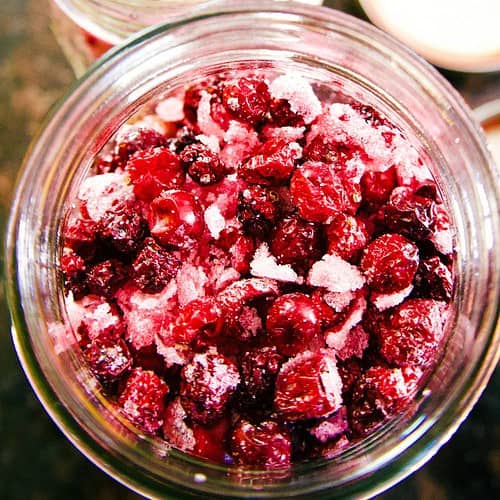
How To Dry Cranberries: Sugar and Oil-Free Recipe
Equipment
- Baking Sheet – if you are going to use the oven method
Ingredients
- 12 ounces fresh cranberries
- 1/2 cup monk fruit
- 1/2 cup orange juice
Instructions
Step 1: PREPARATION:
- Dehydrator Method: Prepare the dehydrator by making sure the trays are clean and lined with silicone non-stick dehydrator sheets.
- Set dehydrator to 135°F
- Oven Method: Set your oven temperature to the lowest setting. Most often this is 175° Fahrenheit. If you can turn your oven down even lower, that would be great, the ideal is 135-145°F.
- Using a large strainer, rinse the fresh cranberries in cold water and drain.
Step 2: PREPARE THE CRANBERRIES
- Bring a large pot of filtered water to a boil.
- Traditional Dried Cranberries. Add the monk fruit to the boiling water and stir until dissolved.Crystallized Cranberries. Do not add the monk fruit at this time.
- Remove the pot from the burner, and add the orange juice, stir to dissolve.
- Next, add cranberries – do not boil cranberries.
- Allow the cranberries to sit in the hot water for approximately 10-15 minutes or until they begin to pop and break open.NOTE: This is an important step. The cranberries will dry better after they have popped and are broken apart slightly. Take your time with this step and make sure the majority of cranberries are slightly split.
- Drain water, and transfer cranberries to a large bowl of ice water to cool and preserve color.
- Drain cranberries from the ice water, and blot them dry using either a clean dish towel or paper towels, being careful not to smash or break apart the cranberries.
- Crystallized Cranberries: Place cranberries in a large bowl and now add monk fruit. Gently toss to coat cranberries evenly.
Step 3: DEHYDRATE
- Dehydrator Method. Spread berries in a single layer onto a lined food dehydrator tray. Go ahead and use multiple trays if you need, to spread out the cranberries. You do not want them sitting too close together.
- Place trays into the dehydrator for 10-12 hours, or until thoroughly dry inside and out.
- Once the cranberries are dried, remove the trays from the dehydrator and let the cranberries cool to room temperature before storing.
- Oven Method. Spread the cranberries out onto a baking sheet lined with a piece of parchment paper. Use multiple baking sheets if you need to keep the cranberries from sitting too close to one another.
- Place the sheets into a low temperature oven. Keep the door open a crack if your oven cannot go below 175°F. Let them bake and dry out for approximately 3-4 hours, or until they are thoroughly dried.
- Once dried, take the cranberries out of the oven and place the baking sheet on a cooling rack. Let the dried cranberries cool completely before storing.
Notes
- Always be careful when handling fresh cranberries to avoid smashing and breaking them apart, otherwise, you will have cranberry sauce and not dried whole fruit!
- The time in the dehydrator will depend on several things; how well you’ve dried the cranberries after draining, how big or small your cranberries are, and how hot you’ve made your dehydrator.
- I find the 135°F temperature works well but if you want your dried cranberries to truly be considered a raw food, then you must set your temperature to 105°F. You will then have to extend the drying time for several more hours.
- How you store your dried cranberries is important, as several factors can affect the shelf life of dried fruits and vegetables.
- It is very important to prevent excess moisture from getting into your stored cranberries. For this reason, it is best to store cranberries in an airtight container under low humidity.
- A mason jar or another tightly sealed glass jar, as well as BPA-free storage containers, will prevent any residual moisture from accumulating.
- Special packaging, like mylar bags with oxygen absorbers, will also help keep moisture, air, and light away for a longer shelf life.
- If stored properly, dried cranberries are shelf-stable for 1-2 months.


